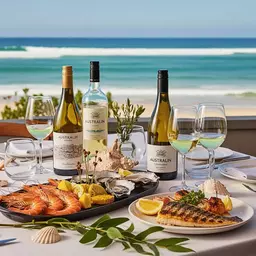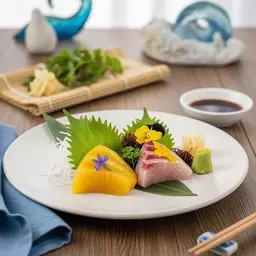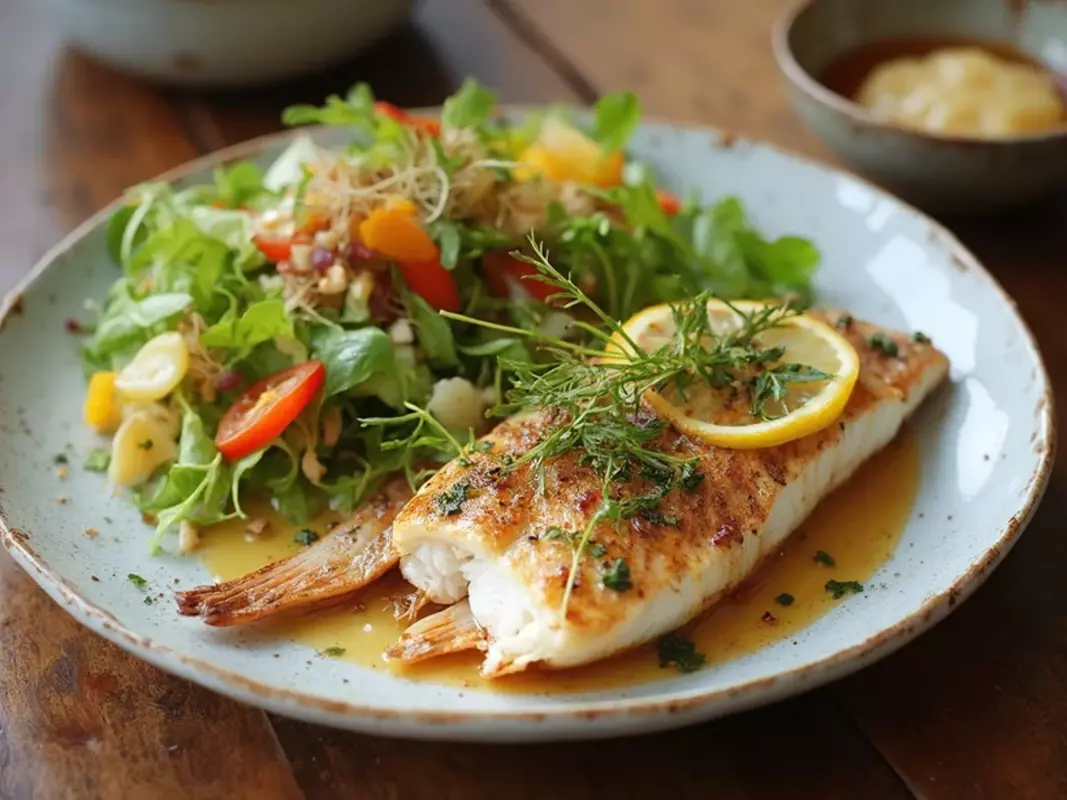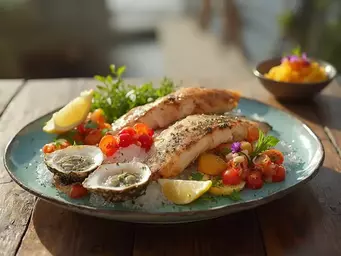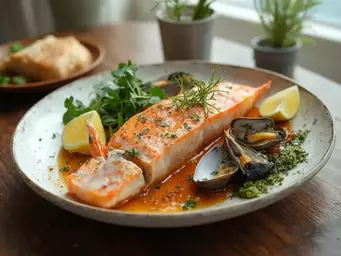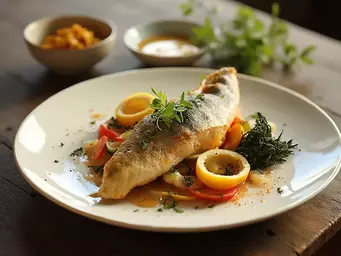Yellowtail's Commitment to Sustainable Seafood
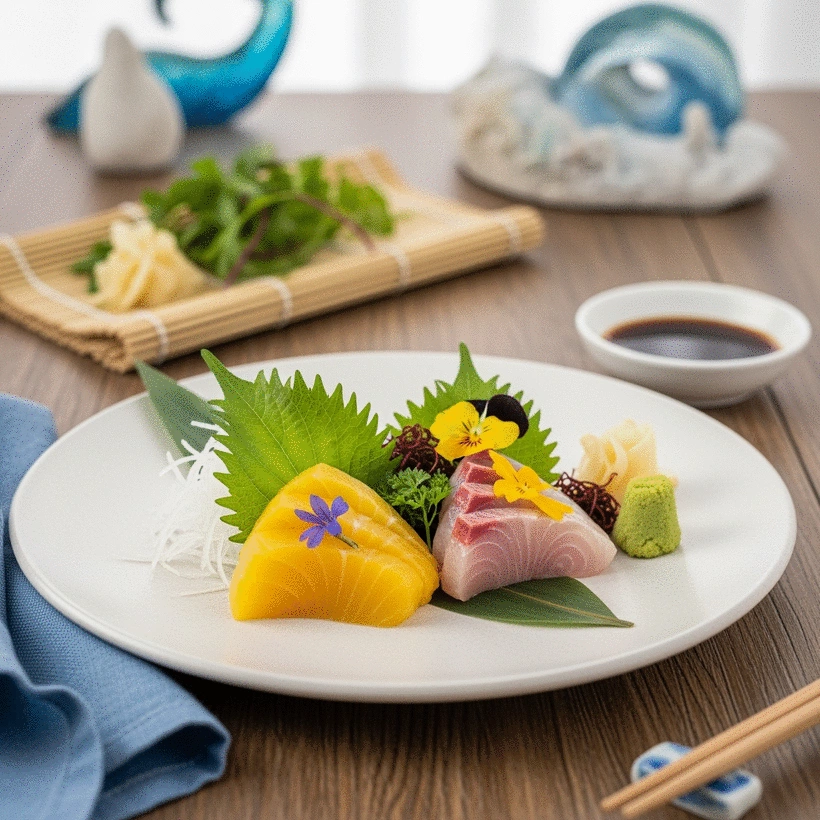
As the demand for sustainable practices grows, understanding our seafood choices has never been more crucial. Have you ever considered how your dining habits impact the oceans? This exploration into sustainable seafood not only emphasizes environmental responsibility but also enriches our culinary experiences.
What You Will Learn
- Sustainable seafood practices ensure the health of fish populations and marine ecosystems.
- Recognizing eco-friendly certifications helps consumers make informed seafood choices.
- Overfishing has dire consequences for marine biodiversity and local fishing communities.
- Engaging in community initiatives can foster a culture of sustainability and education.
Key Pillars of Sustainable Seafood
This visual outlines the core components and benefits of sustainable seafood practices, highlighting the criteria for sustainability, the role of such practices in ocean health, and the impact of overfishing.
Defining Sustainable Seafood
- Harvesting Methods: Minimize harm to aquatic habitats.
- Fish Population Health: Abundant, non-endangered species only.
- Community Impact: Supports local fishing communities.
Benefits for Ocean Health
- Marine Biodiversity: Protects a variety of species.
- Habitat Preservation: Reduces damage to marine environments.
- Long-Term Food Security: Healthy oceans for future generations.
Consequences of Overfishing
- Species Extinction: Leads to endangered populations.
- Altered Ecosystems: Disrupts the natural food web.
- Economic Hardship: Affects fishing communities.
Eco-Friendly Certifications
- Marine Stewardship Council (MSC): Sustainable fishing.
- Aquaculture Certification Council (ACC): Responsible farming.
- Friend of the Sea: Comprehensive sustainable approach.
Future Trends in Sustainable Dining
- Increased Collaboration: With local fisheries & suppliers.
- Consumer Education: Diners seeking eco-friendly options.
- Innovative Cooking: Minimizing waste, enhancing sustainability.
Supporting Sustainable Seafood
- Ask Questions: Inquire about sourcing at restaurants.
- Look for Certifications: Choose certified sustainable products.
- Support Local: Opt for local seafood with smaller carbon footprint.
Understanding Sustainable Seafood and Its Importance
As a passionate food enthusiast, I often find myself reflecting on the intricate relationship between our culinary choices and the health of our oceans. Sustainable seafood, in particular, has become a focal point in discussions about the future of our food systems. But what exactly does it mean to choose seafood that is sustainable? Let’s dive into this vital topic that impacts not just our plates, but also the very ecosystems that support marine life.
Sustainable seafood is defined by practices that maintain fish populations and their habitats while promoting responsible fishing. It includes methods that ensure fish stocks are harvested at a rate that allows them to replenish, protecting the biodiversity of our oceans. By supporting sustainable seafood, we are making a conscious choice to preserve the delicate balance of marine ecosystems for future generations.
What Defines Sustainable Seafood?
Understanding sustainable seafood is the first step in making informed dining choices. This type of seafood is caught or farmed in ways that consider the long-term health of fish populations and the marine environment. Here are some key criteria that define sustainable seafood:
- Harvesting Methods: Sustainable practices minimize harm to aquatic habitats.
- Fish Population Health: Only fish that are abundant and not endangered are harvested.
- Community Impact: Sustainable seafood practices support local fishing communities.
By recognizing these criteria, we can appreciate the importance of sourcing seafood that aligns with our values of environmental stewardship and community well-being.
The Role of Sustainable Practices in Ocean Health
Sustainable practices play a crucial role in maintaining ocean health. Overfishing can lead to depleted fish stocks and disrupted marine ecosystems, ultimately affecting not only marine life but also the livelihoods of communities reliant on fishing. When we embrace sustainable seafood, we contribute to:
- Marine Biodiversity: Protecting a variety of species ensures a balanced ecosystem.
- Habitat Preservation: Sustainable fishing methods reduce damage to sensitive marine environments.
- Long-Term Food Security: Healthy oceans can continue to provide food for generations.
These practices not only safeguard the environment but also foster resilience in the face of climate change and overfishing challenges. For instance, the assessment of Yellowtail Kingfish stocks highlights the importance of managing fish populations to prevent overexploitation and maintain ecological balance.
The Impact of Overfishing on Marine Biodiversity
Overfishing has a profound impact on marine biodiversity, leading to the decline of species and disrupting the natural balance of marine ecosystems. When certain species are over-harvested, it creates ripple effects across the food chain. Here’s how overfishing affects biodiversity:
- Species Extinction: Some fish populations become endangered or extinct.
- Altered Ecosystems: Removing key species can lead to the proliferation of others, disrupting the food web.
- Economic Consequences: Communities dependent on fishing face economic hardship.
By understanding these impacts, we can recognize our role in ensuring the sustainability of our oceans. Each choice we make can drive demand for responsible seafood practices.
Understanding Eco-Friendly Certifications for Seafood
Eco-friendly certifications are essential tools for consumers looking to make sustainable seafood choices. These certifications help us identify products that meet rigorous standards for environmental sustainability. Common certifications include:
- Marine Stewardship Council (MSC): Recognizes sustainable fishing practices.
- Aquaculture Certification Council (ACC): Ensures responsible farming methods.
- Friend of the Sea: Focuses on sustainable fishing and aquaculture practices.
Choosing seafood with these certifications supports businesses committed to sustainable practices, giving us confidence in the seafood we consume. At The Yellow Tail Table, we advocate for making informed choices that reflect our dedication to marine conservation and responsible dining. For a broader perspective on industry efforts, you can review reports such as The Kingfish Company Annual Report 2023, which details their commitment to sustainable aquaculture.
Pro Tip
When dining out, consider asking your server about the seafood's sourcing and sustainability. This not only educates you but also encourages restaurants to prioritize sustainable practices. Your inquiry can make a difference!
Frequently Asked Questions About Sustainable Seafood
- What is sustainable seafood?
- Sustainable seafood refers to fish or shellfish that are caught or farmed in ways that minimize environmental impact, maintain healthy fish populations, and support local communities. It ensures that marine ecosystems remain productive for future generations.
- Why is sustainable seafood important?
- Choosing sustainable seafood helps prevent overfishing, protects marine biodiversity, preserves aquatic habitats, and supports the livelihoods of fishing communities. It's crucial for the long-term health of our oceans and food security.
- How can I identify sustainable seafood?
- Look for eco-friendly certifications like the Marine Stewardship Council (MSC), Aquaculture Certification Council (ACC), or Friend of the Sea. These labels indicate that the seafood meets rigorous sustainability standards. You can also use resources like Monterey Bay Aquarium's Seafood Watch guides.
- What are the consequences of overfishing?
- Overfishing can lead to the depletion of fish stocks, species extinction, disruption of marine food webs, and significant economic hardship for communities reliant on fishing. It alters entire marine ecosystems.
- How can I support sustainable seafood practices?
- When dining out, ask about the seafood's origin and sustainability. Look for certified sustainable products when shopping. Support local fisheries, participate in educational initiatives, and share your knowledge with others to foster a culture of sustainability.
Summarizing Yellowtail's Sustainable Seafood Journey
At The Yellow Tail Table, we are proud to recount the remarkable journey of Yellowtail Restaurant in adopting sustainable seafood practices. It’s not just a trend; it's a commitment to ensuring that our oceans thrive while providing diners with the freshest, most responsibly sourced seafood. As we look ahead, it's essential to consider how these practices will shape the future of the restaurant industry.
With increasing awareness of environmental issues, the future of sustainable practices in dining is looking promising. Restaurants are beginning to understand that consumers value transparency and sustainability. This shift is not only beneficial for our planet but also encourages a healthier dining culture that connects us to the sources of our food.
The Future of Sustainable Practices in the Restaurant Industry
The restaurant industry is on the brink of significant changes, driven by a growing demand for sustainable practices. Here are a few key trends we anticipate shaping the future:
- Increased Collaboration: Restaurants will partner more with local fisheries and sustainable suppliers to ensure better sourcing.
- Consumer Education: Diners will be more informed about their choices, seeking out restaurants that prioritize eco-friendly seafood.
- Innovative Cooking Techniques: Chefs are likely to adopt methods that minimize waste and enhance sustainability in food preparation.
This evolving landscape means that diners will play a crucial role in influencing restaurant practices. By making conscious choices, we can drive positive change. It's an exciting time for us at The Yellow Tail Table as we witness our culinary community embracing responsibility!
Exploring the Role of Seafood Watch in Consumer Choices
The Seafood Watch program has become a vital resource for consumers who want to make informed decisions about seafood. It provides guidelines on which seafood options are sustainable and which are not. Many of our diners at Yellowtail Restaurant utilize these resources to choose their meals wisely.
- Easy Access: Seafood Watch offers a mobile app and website, making it simple to check the sustainability of seafood choices.
- Guidance for Restaurants: By supporting the initiative, restaurants can align their menus with sustainable practices.
- Community Engagement: Educating the community about sustainable seafood helps raise awareness and promotes better practices.
As we embrace the insights from Seafood Watch, we can cultivate a community of conscious diners eager to support sustainable seafood options. At The Yellow Tail Table, we encourage everyone to explore these resources, enhancing their dining experiences!
Taking Action: How You Can Support Sustainable Seafood
We all have a part to play in supporting sustainable seafood practices. Whether you're dining out or shopping for groceries, every choice matters. Here are some practical steps you can take to make a difference:
Tips for Choosing Sustainable Seafood When Dining Out
When you're at a restaurant, it’s easy to make choices that support sustainability. Here are some tips:
- Ask Questions: Inquire about where the seafood comes from and if it’s sustainably sourced.
- Look for Certifications: Seek out establishments that display eco-friendly certifications, such as those from the Marine Stewardship Council.
- Choose Local: Opt for dishes featuring local seafood, which often has a smaller carbon footprint.
These small actions can lead to big changes! By actively participating in these practices, you can enjoy delicious meals while supporting our oceans. For further reading on collective impacts, the Sustainable Fisheries Partnership's 2023 Year in Review offers insights into broad sustainability efforts.
Encouraging Sustainable Practices in Your Own Community
Community engagement is crucial for fostering a culture of sustainability. Here are some ways you can inspire your local community:
- Host Educational Events: Organize workshops or talks about the importance of sustainable seafood.
- Support Local Fisheries: Buy directly from local fishermen or join a community-supported fishery.
- Share Knowledge: Use social media to raise awareness about sustainable seafood choices and practices.
Each of us can make a difference in our communities by sharing knowledge and supporting local initiatives. At The Yellow Tail Table, we encourage everyone to become advocates for sustainability!
Understanding the Seafood Supply Chain and Its Importance
The seafood supply chain affects everything from the ocean's health to your dinner plate. Understanding this chain can help us make more responsible choices. Here are a few aspects to consider:
- Traceability: Knowing where your seafood comes from ensures it was harvested responsibly.
- Impact on Ecosystems: Each step in the supply chain can affect marine biodiversity, so it’s important to support sustainable practices.
- Fair Trade Practices: Supporting suppliers who prioritize fair wages and humane treatment of workers is essential.
By being informed about the seafood supply chain, we empower ourselves to make choices that benefit both our health and the environment. Let’s work together to foster a future where sustainable seafood is the norm!
Recap of Key Points
Here is a quick recap of the important points discussed in the article:
- Sustainable seafood practices are essential for maintaining fish populations and marine ecosystems.
- Key criteria for sustainable seafood include responsible harvesting methods, fish population health, and supporting local fishing communities.
- Overfishing impacts biodiversity by threatening species and disrupting marine ecosystems.
- Eco-friendly certifications like MSC and ACC help consumers identify sustainable seafood options.
- As consumers, we can support sustainability by asking questions when dining out and choosing local seafood.
- Community engagement is vital for fostering a culture of sustainability and promoting local fisheries.

